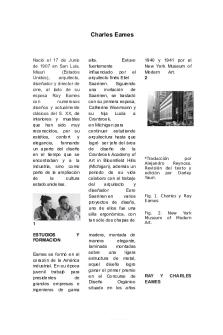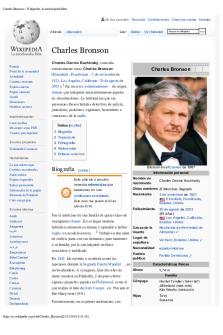Boyles & Charles\' Law Simulation Gizmo PDF

| Title | Boyles & Charles\' Law Simulation Gizmo |
|---|---|
| Author | sara arebi |
| Course | science |
| Institution | Libyan International Medical University |
| Pages | 7 |
| File Size | 314.2 KB |
| File Type | |
| Total Downloads | 69 |
| Total Views | 158 |
Summary
fsddddddddddddddddddd fffffffffffffffff ffffffffffffffffffffff ffffffffffffffffffffff ffffffffffffffffffffffffff fffffffffffffffffffffffsdfffffffffffsdfdf df df fds fd...
Description
Name:
Date:
Student Exploration: Boyle’s Law and Charles’s Law Directions: Follow the instructions to go through the simulation. Respond to the questions and prompts in the orange boxes. Vocabulary: absolute zero, Boyle’s law, Charles’s law, Gay-Lussac’s law, Kelvin scale, pressure Prior Knowledge Question (Do this BEFORE using the Gizmo.) A small helium tank measures about two feet (60 cm) high. Yet it can fill over 50 balloons! How can such a small tank contain enough helium to fill so many balloons?
Gizmo Warm-up The Boyle’s Law and Charles’s Law Gizmo shows a container of gas. Inside, small purple spheres represent gas molecules. 1. Observe the particles. Are they all moving at the same speed?
2. How do the particles interact with the walls and lid of the container? . These interactions contribute to the pressure on the walls of the container. Pressure is defined as force per unit area. The SI units of pressure are newtons per square meter (N/m2), or pascals (Pa). 2. Slowly drag the temperature (T) slider back and forth. (Note: In this Gizmo, the Kelvin scale is used to measure temperature. On the Kelvin scale, 0 degrees is absolute zero, the coldest possible temperature. Absolute zero is equal to -273.15 °C or -459.67 °F) A. How does the change in temperature affect the speed of the molecules?
B. How does the change in temperature affect the volume of the container?
Reproduction for educational use only. Public sharing or posting prohibited. © 2020 ExploreLearning™ All rights reserved
Activity A: Boyle’s law
Get the Gizmo ready: ● Set the temperature (T) to 300 K. ● Check that the mass (m) is set to 0 kg.
Question: How does pressure affect the volume of a gas? 1. Form hypothesis: In this experiment, you will pile weights on the lid of the container of gas. What do you think will happen as more weight is added to the lid?
2. Notice: Look at the DESCRIPTION pane. What is the mass of the lid? How much pressure does the lid exert on the gas?
3. Collect data: With the temperature held constant at 300 K, use the Select mass slider to place weights on the lid. Record the pressure and volume of the gas for each added mass. Added mass on the lid
Total mass (lid + added mass)
0 kg
10 kg
10 kg
20 kg
20 kg
30 kg
30 kg
40 kg
Pressure*
Volume
*This model does not include atmospheric pressure, which is 101,325 N/m2. 4. Analyze: As the pressure increases at constant temperature, what happens to the volume of the gas?
This relationship is called Boyle’s law. 5. Calculate: Compare the pressure and volume values in your data table. A. How did doubling the pressure change the gas volume?
B. How did tripling the pressure change the gas volume?
Reproduction for educational use only. Public sharing or posting prohibited. © 2020 ExploreLearning™ All rights reserved
C. How did quadrupling the pressure change the gas volume?
6. Predict: If the added mass on the lid was 50 kg, a total mass of 60 kg would exert pressure on the gas inside the container. What will be the volume of the gas?
7. Test: Test your prediction using the Gizmo. What is the volume of the gas? Was your prediction correct? 8. Create a graph: On the GRAPH tab, select V vs. P. Set m to 0 kg, and click Record to plot a point on the graph. Plot a point for each possible mass to create a graph showing the relationship between pressure and volume. When your graph is completed, click the camera ( ) icon to take a snapshot. Right-click the image, and click Copy Image. Paste the image into the space below, and label the graph “Volume vs. Pressure.”
A. What is the shape of the graph?
B. How does this graph illustrate Boyle’s law?
C. How do you think the graph might change if the temperature was held constant at a higher temperature, say 400 K?
9. Apply: Think about a small helium tank that can fill 50 balloons. What must be true about the helium in the tank compared to the helium in the balloons?
Reproduction for educational use only. Public sharing or posting prohibited. © 2020 ExploreLearning™ All rights reserved
Activity B: Charles’s law
Get the Gizmo ready: ● On the SIMULATION pane, set T to 100 K and m to 0 kg.
Question: How does temperature affect the volume of a gas? 1. Form hypothesis: How do you think the volume of a gas will change as the temperature rises and falls?
2. Collect data: Without changing the mass on the lid, record the pressure and volume of the gas at each of the given temperatures. Temperature
Pressure*
Volume
100 K 200 K 300 K 400 K 500 K *This model does not include atmospheric pressure, which is 101,325 N/m2. 3. Analyze: As the temperature increases at constant pressure, what happens to the volume of the gas?
This relationship is called Charles’s law. 4. Explain: Based on the motions of the gas molecules, why do you think the volume changed as it did when the temperature was increased?
5. Think about it: Why do you think the pressure was the same in each test?
Reproduction for educational use only. Public sharing or posting prohibited. © 2020 ExploreLearning™ All rights reserved
6. Calculate: Compare the pressure and volume values in your data table. A. How did doubling the temperature affect the gas volume? B. How did tripling the temperature affect the gas volume? C. How did quadrupling the temperature affect the gas volume?
7. Predict: Suppose the temperature was 50 K. What will be the volume of the gas?
8. Test: Test your prediction using the Gizmo. What is the volume of the gas?
Was your prediction correct? 9. Create a graph: On the GRAPH tab, select V vs. T. Set T to 50 K, and click Record to plot a point on the graph. Plot a point every 50 degrees to create a graph showing the relationship between temperature and volume. When your graph is completed, click the camera icon to take a snapshot. Paste the image into the space below, and label the graph “Volume vs. Temperature.”
D. What is the shape of the graph?
E. How does this graph illustrate Charles’s law? 10. Apply: Based on what you learned, what would happen to a balloon placed in the freezer?
What would happen to a balloon placed in a warm oven? (Assume it doesn’t pop.)
11. Think and discuss: Consider temperature, pressure, and volume. How does the mathematical relationship in Boyle’s law compare to that in Charles’s law?
Reproduction for educational use only. Public sharing or posting prohibited. © 2020 ExploreLearning™ All rights reserved
Activity C: Gay-Lussac’s Law
Get the Gizmo ready: ● On the SIMULATION pane, set T to 300 K and m to 15 kg. ● Turn on the Constant volume checkbox.
Question: How does temperature affect the pressure of a gas when volume is constant? 1. Form hypothesis: If the volume of a gas is held constant, how do you think the pressure will change as temperature increases?
2. Collect data: Select the TABLE tab. Record the pressure when T = 100 K, 200 K, and so forth up to 500 K. (Note: The volume will remain constant at 1.02 m3.) Temperature
Pressure
Pressure Temperature
100 K 200 K 300 K 400 K 500 K
3. Analyze: Divide the pressure by the temperature to fill in the last column of the table. Since 1 N/m2 is equal to 1 pascal (Pa), write the units of the ratio as Pa/K. A. When the volume is held constant, how does the pressure change as temperature increases?
B. What do you notice about the ratio of pressure to temperature, when volume is constant?
Gay-Lussac’s law states that, at constant volume, the ratio of pressure to temperature is constant. As temperature increases, pressure increases as well. 4. Explain: Based on the motions of the gas molecules, why do you think the pressure changed as it did when the temperature was increased?
Reproduction for educational use only. Public sharing or posting prohibited. © 2020 ExploreLearning™ All rights reserved
5. Calculate: Compare the pressure and temperature values in your data table. A. How did doubling the temperature affect the pressure? B. How did tripling the temperature affect the pressure? C. How did quadrupling the temperature affect the pressure?
1. Create a graph: Record the pressure for temperatures of 50 K, 150 K, 250 K, 350 K, and 450 K. On the GRAPH tab, select P vs. T. Click the camera icon to take a snapshot. Paste the image into the box below, and label the graph “Pressure vs. Temperature.”
F. What is the shape of the graph?
G. How does this graph illustrate Gay-Lussac’s law?
2. Apply: Based on what you learned, what do you think would happen if you placed a sealed container of gas into a fire?
3. Challenge: Combine Boyle’s law, Charles’s law, and Gay-Lussac’s law into a single proportional relationship between pressure (P), volume (V), and temperature (T). Use the symbol “∝” to represent “is proportional to.” Explain your reasoning.
Reproduction for educational use only. Public sharing or posting prohibited. © 2020 ExploreLearning™ All rights reserved...
Similar Free PDFs

Boyles Charles Laws Gizmo Assignment
- 10 Pages

Boyles law lab report
- 3 Pages

Boyles Fitness - CLIENT BRIEF
- 2 Pages

Simulation
- 14 Pages

Charles Perrow - ....
- 2 Pages

Charles Eames
- 5 Pages

Charles Bronson
- 6 Pages

Simulation
- 20 Pages

Hukum Charles
- 3 Pages

Charles Baudelaire
- 7 Pages

Charles Pierce
- 4 Pages
Popular Institutions
- Tinajero National High School - Annex
- Politeknik Caltex Riau
- Yokohama City University
- SGT University
- University of Al-Qadisiyah
- Divine Word College of Vigan
- Techniek College Rotterdam
- Universidade de Santiago
- Universiti Teknologi MARA Cawangan Johor Kampus Pasir Gudang
- Poltekkes Kemenkes Yogyakarta
- Baguio City National High School
- Colegio san marcos
- preparatoria uno
- Centro de Bachillerato Tecnológico Industrial y de Servicios No. 107
- Dalian Maritime University
- Quang Trung Secondary School
- Colegio Tecnológico en Informática
- Corporación Regional de Educación Superior
- Grupo CEDVA
- Dar Al Uloom University
- Centro de Estudios Preuniversitarios de la Universidad Nacional de Ingeniería
- 上智大学
- Aakash International School, Nuna Majara
- San Felipe Neri Catholic School
- Kang Chiao International School - New Taipei City
- Misamis Occidental National High School
- Institución Educativa Escuela Normal Juan Ladrilleros
- Kolehiyo ng Pantukan
- Batanes State College
- Instituto Continental
- Sekolah Menengah Kejuruan Kesehatan Kaltara (Tarakan)
- Colegio de La Inmaculada Concepcion - Cebu




